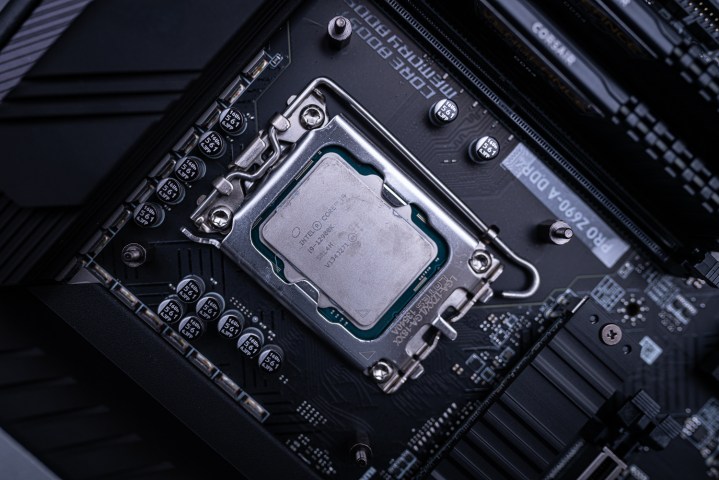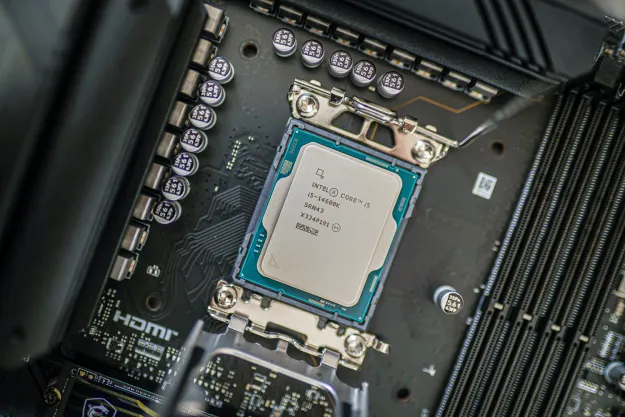Intel still hasn’t officially released the pricing and specifications for the non-K Alder Lake series of CPUs, but the entire lineup leaked today.
Thanks to Best Buy listings, we now know how much these new 12th-Gen Intel processors will cost, as well as what kind of performance we can expect from them.

Intel’s non-K lineup of CPUs is aimed at budget and midrange builds, although the Core i7 and Core i9 lines are both suited for high-end gaming. Meant to offer a good balance of performance and power usage, these processors aren’t built with overclocking in mind. The range covers a long list of CPUs, starting with the ultra-budget Intel Pentium G7400, and going all the way up to the Intel Core i9-12900 and Core i9-12900F.
The Core i9-12900 and Core i9-12900F feature 16 cores and 24 threads, just like their excellent K equivalent, but they have a different clock speed and TDP. These CPUs offer a base clock of 2.4GHz for the performance (P) cores and 1.8GHz for the efficiency (E) cores, as well as a maximum boost clock of 5.1GHz. The TDP is much lower than that of the Core i9-12900K processor — 65 watts versus 125 watts. The F variant is listed for $499, while the Core i9-12900 is priced at $519.
Much like the Core i9, Core i7 processors also offer the same core configuration, but with a lower clock speed and TDP. The Core i7-12700(F) CPU comes with 12 cores and 20 threads. Clock speeds include 2.1GHz for the P-cores and 1.6GHz for the E-cores. It can be boosted to a maximum of 4.9GHz. In terms of TDP, it’s the same as the Core i9 non-K line: 65W. This CPU will be sold for $359, with the F variant selling for $329.

The Core i5 line sports the most noticeable architectural changes because the non-K lineup doesn’t offer a hybrid design, meaning there is only one type of core in these CPUs: Golden Cove. These are the performance (P) cores used in the Core i9 and Core i7 mentioned above, but the non-K version of 12th-Gen Core i5 will not feature Gracemont (efficiency) cores.
Both the Intel Core i5-12600 and the Core i5-12400 come with six cores and 12 threads. The former has a base clock of 3.3GHz and a 4.8GHz turbo clock, while the latter offers 3.0GHz and 4.6GHz respectively. In addition to those two, Intel is also releasing a Core i5-12500 processor with a 2.5GHz base clock and 4.4GHz turbo clock. These processors are aimed at midrange builds. The Core i5-12600 will sell for $240, the Core i5-12500 for $220, and the Core i5-12400 for $210. The F variant of the Core i5-12400 will be priced at $180.
The above processors should all do well in gaming, but Intel is also releasing some budget CPUs for less demanding usage. In the Core i3 lineup, we can expect to see the Core i3-12300 and 12100. Like the Core i5, these processors only offer Golden Cove cores, both of them featuring four cores and eight threads. Intel Core i3-12100 will retail for $140 for the basic model and $110 for the F variant. The 12300 is priced at $150.
Intel continues the budget Pentium and Celeron lines, adding one of each to the Alder Lake generation: Intel Pentium G7400 and Intel Celeron G6900 with two performance cores and four threads each. Pentium will offer a base clock of 3.7GHz, while Celeron comes with 3.4GHz. These chips are extremely affordable, with the Pentium priced at $80 and the Celeron at just $60.
The new processors were initially leaked on Twitter by @momomo_us. Best Buy does have listings for some of these CPUs, but they are all currently marked as sold out and are not available for purchase.
Today has not been a great day for Intel in terms of early leaks. Aside from the above, a Peruvian retailer has also started carrying the Core i5-12400F CPU before it was even announced.
Editors' Recommendations
- It just became the perfect time to buy a last-gen Intel CPU
- Intel Battlemage graphics cards: release date speculation, price, specs, and more
- Nice try, Intel, but AMD 3D V-Cache chips still win
- Reviewers agree: Intel’s latest chip is truly ridiculous
- Intel just launched the ‘world’s fastest’ CPU




